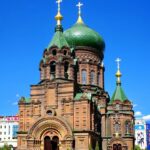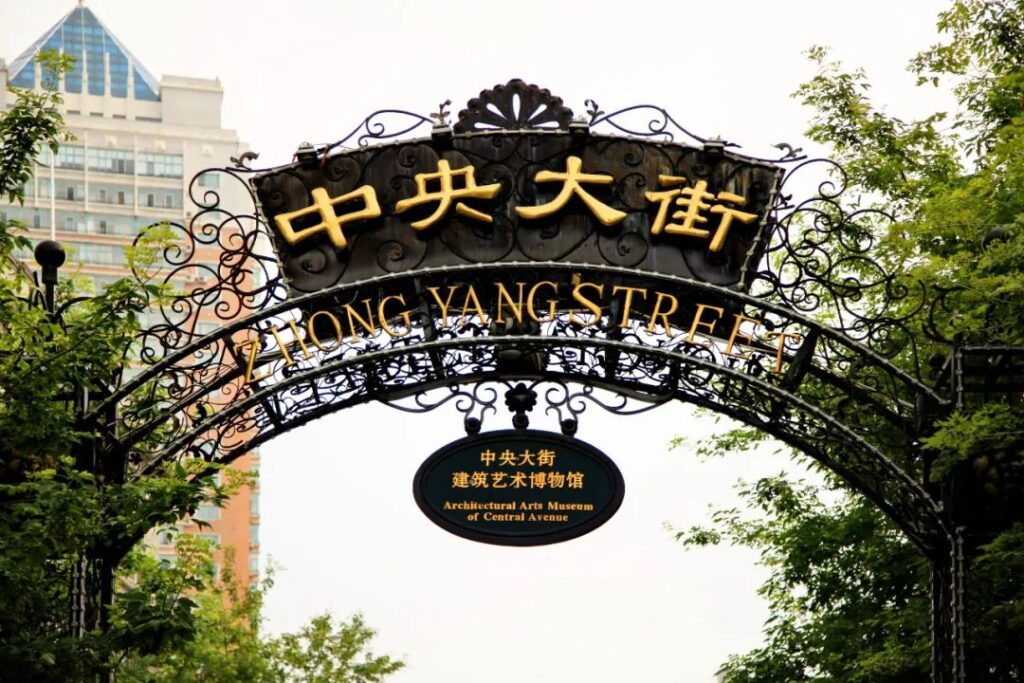
In Harbin, the most worth visiting place is the renowned “Central Street.” Central Street is the most prosperous commercial pedestrian street in Harbin, starting from the Flood Control Memorial Tower Square on the north bank of the Songhua River and ending at Xinyang Square in the south, with a total length of 1,450 meters.
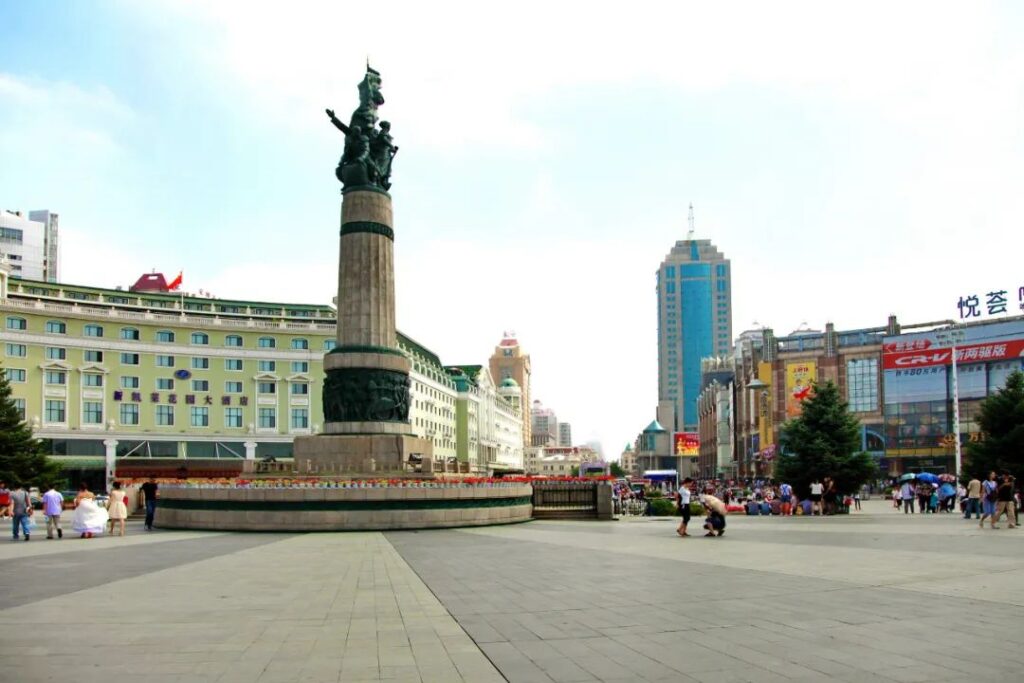
Although Central Street is not the longest street in Harbin, it is a must-visit destination for tourists. Locals say, “If you haven’t been to Central Street, you can’t say you’ve been to Harbin.” Central Street can be considered a microcosm of Harbin, playing a role similar to Nanjing Road in Shanghai.
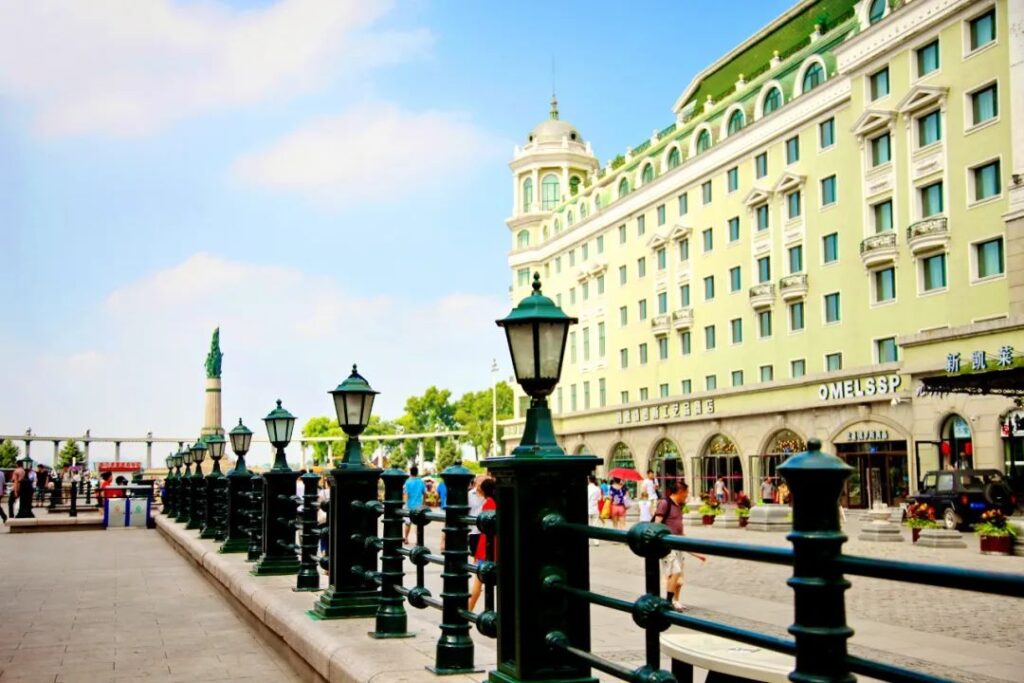
Central Street was formed in 1900 when Harbin underwent large-scale urban construction. A large number of workers came to Harbin from the interior, and this area was originally a desolate and low-lying meadow along the river. Horse-drawn carts carrying building materials opened up a dirt road through the mud, which was called “Chinese Street,” meaning the street where Chinese people lived.

With the completion of the Chinese Eastern Railway, Harbin became the financial, trade, and transportation center of the Far East, and this street also became an important commercial street in Harbin. Shops operated by foreigners gradually increased, and the street was filled with signs in Russian, English, French, and Japanese. The buildings on both sides of the street were mostly European-style, and in 1925, the street was renamed “Central Street.”
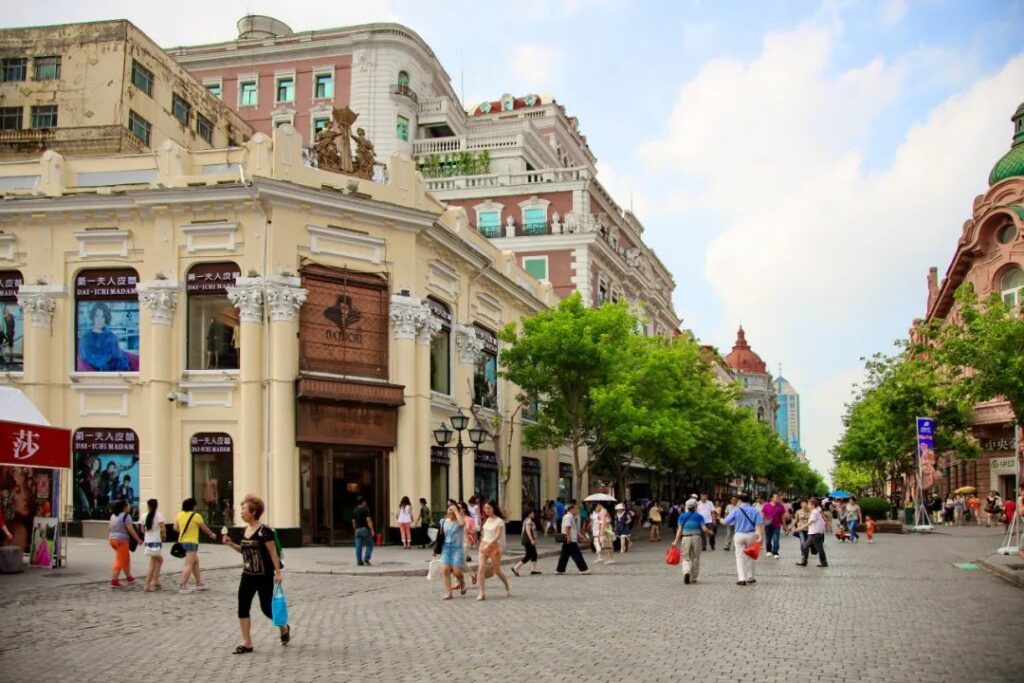
To this day, Harbin’s unique architectural culture and the European-style lifestyle of Harbin people can be seen on Central Street. Walking on the street, the most intuitive manifestation is the European-style buildings. These European-style buildings are scattered throughout Central Street, making it the most famous street in the Far East.

On Central Street, the most charming 300-year history of European cultural development is vividly displayed, encompassing the profound depth of history and the vast and profound architectural art, which is rare in the world. Amidst mystery and antiquity, I traversed the history of a street, intimately interacting with it, as if I were in a European town, leaving me in awe.
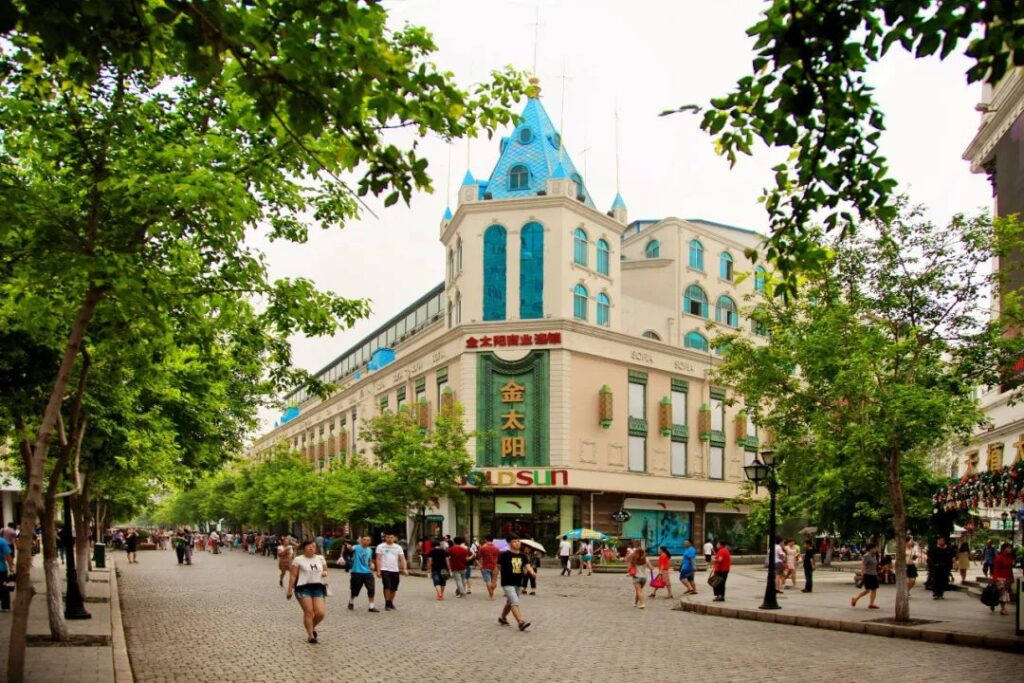
There are 71 European-style and imitation European-style buildings on Central Street, showcasing various styles such as Renaissance, Baroque, Eclecticism, and Art Nouveau. These buildings embody the essence of Western architectural art, making Central Street an architectural art museum.
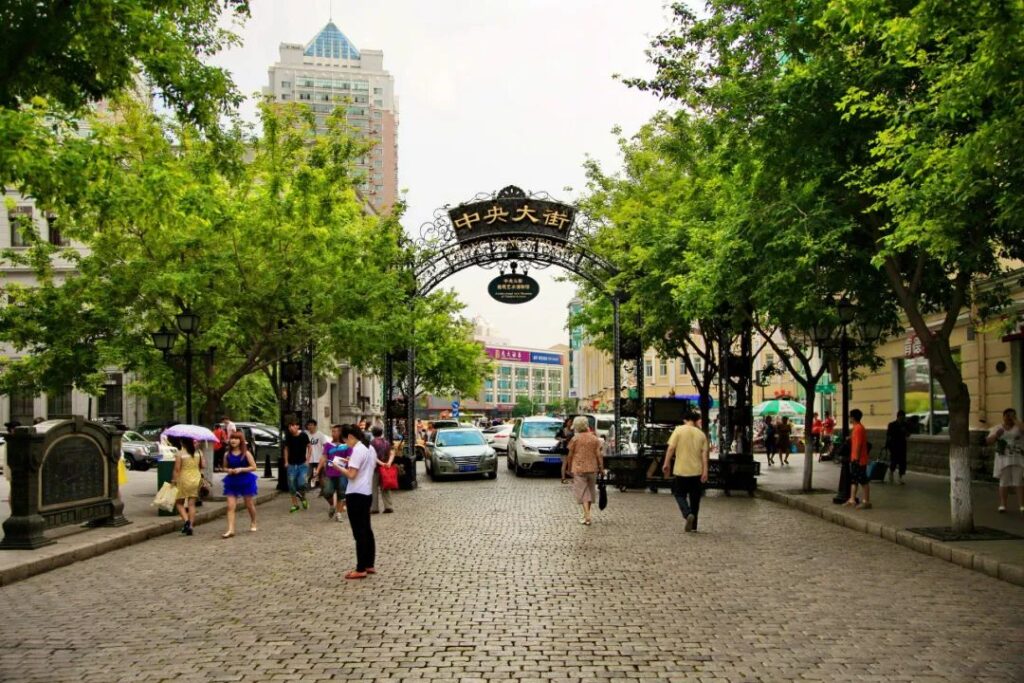
The most peculiar feature of Central Street is the rectangular paving stones that cover the entire street. These stones are laid longitudinally, and they were designed by Russian engineer Komtrachok in 1924. The cross-section of the paving stones is 18 centimeters long and 10 centimeters wide, and they are neatly and tightly arranged, with the exposed surface resembling Russian bread. Harbin people call these stones “bread stones.”

It is said that at that time, the price of a single paving stone was equivalent to a silver dollar, which was enough for a poor family’s monthly expenses. There are approximately 870,000 stones paving the street, making it as rare as a gold-paved road. The smooth and shiny rectangular stones converge on the street, adding a touch of elegance to Central Street.

On Central Street, you can find an array of European-style shops, bakeries, restaurants, hotels, and bars. This street is always filled with the fashionable atmosphere of various countries worldwide. Russian furs, British woolens, French perfumes, Japanese cotton, Swiss watches, Javanese sugar, and more are all available here, creating a dazzling display that resembles an international commodity expo.

The Moderne Hotel, known as the “Oriental Versailles,” was founded by a French Jew named Kaspe in 1906. In Harbin, the name “Moderne” is well-known and has remained unchanged since the Qing Dynasty. The hotel’s design is smooth, simple, and relaxed, with its facade reflecting strong “Art Nouveau” characteristics through elements such as windows, balconies, parapet walls, and domes.
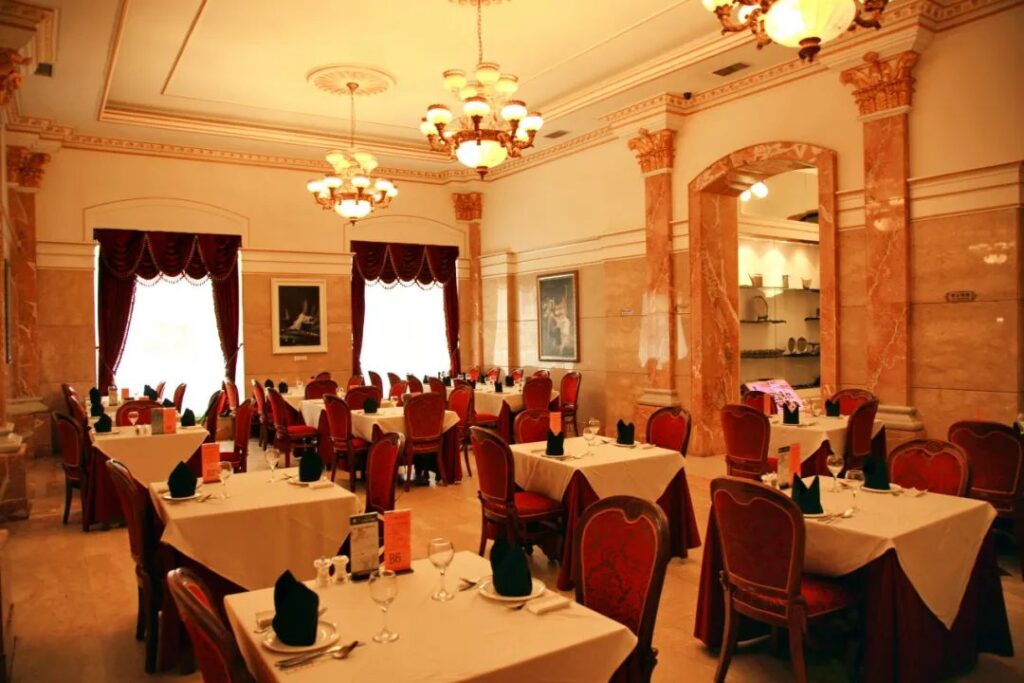
The interior of the Moderne Hotel is luxurious and magnificent, with walls adorned with elegant murals or mirrored surfaces, and columns featuring exquisite carvings. The brass staircase railings are filled with graceful lines, and combined with the glittering chandeliers, marble finishes, and delicate decorative lines, they exude an air of luxury and elegance. All of this evokes memories of the comfort and splendor of the Moderne Hotel in its heyday.

The Moderne Hotel has a long political, commercial, and cultural history, witnessing many important events in modern Chinese history. It is like a projector, replaying the images of the last emperor Puyi, painter Xu Beihong, writers Guo Moruo and Ding Ling, and the “Mother of the Nation” Soong Ching-ling, who all once stayed here. The Moderne Hotel was also the venue where the new Chinese government planned and prepared for the convening of the new Chinese People’s Political Consultative Conference.

Harbin, the century-old music capital, often hosts performing groups from neighboring countries, creating climaxes of Central Street music festivals. Every old building pulsates with the rhythm of music, and this old street tells people of its uniqueness through its combination of ancient and prosperous, fashionable and retro, exotic and refreshing elements.
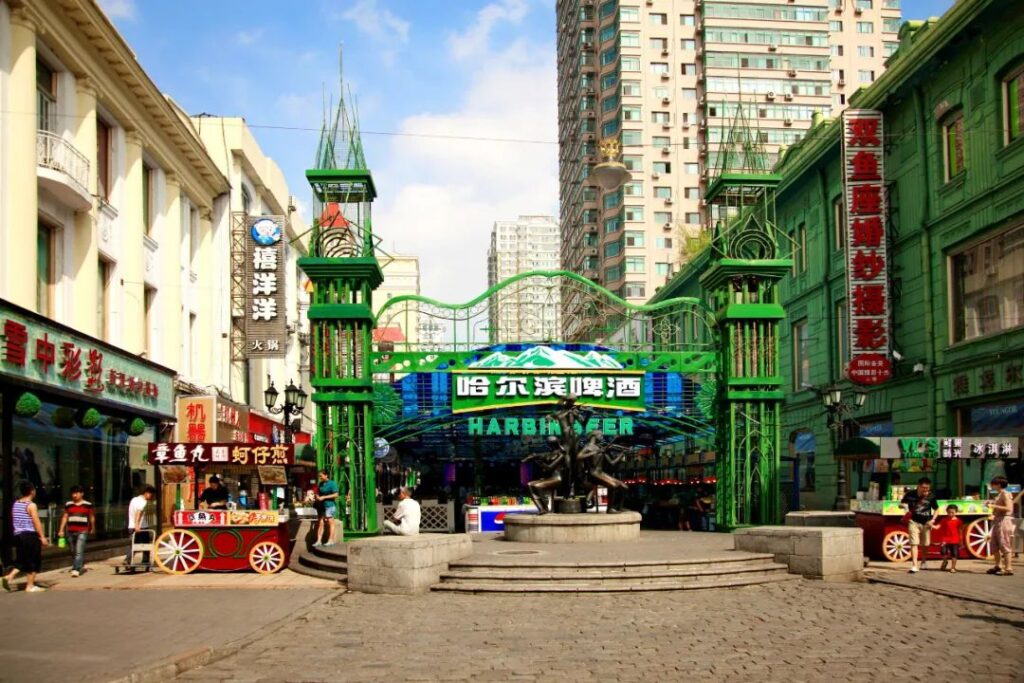
Walking on the bread stones of the street, a sense of freshness, emotion, and sweetness wafts from every corner of the street, emanating from the coffee shops in the exotic buildings along both sides. A century of inheritance has turned the coffee shops along the street into quiet and elegant clubs, with a fresh aroma filling every crevice of the stone pavement, making the ancient street brim with the fragrance of coffee and desserts.
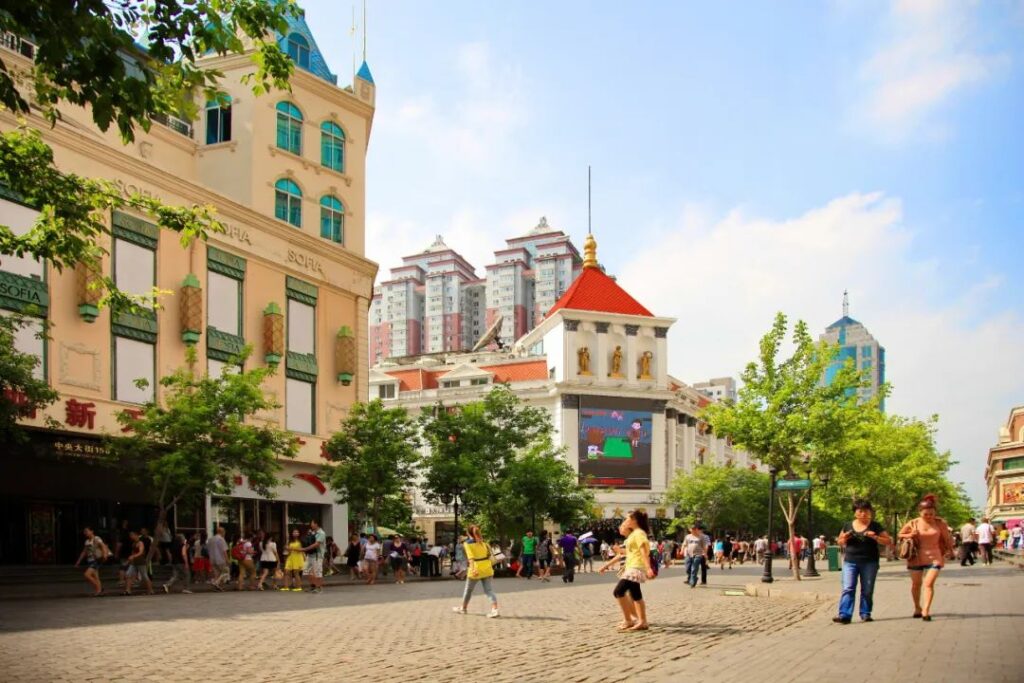
Standing on the street, emptying oneself in the center of this old street, letting the romantic charm gently slide past one’s ears, the taste of happiness slowly sets in. Central Street, with its unique European-style architecture, numerous boutiques, clusters of leisure areas, and colorful cultural life, has become a bright scenery in Harbin.

At night, Central Street is even more charming, with its dazzling lights and beautiful appearance. People empty their minds, slow down their pace, relax their shoulders, and either relax and entertain themselves in the square here, leisurely shuttle between the shopping malls, or fully enjoy Russian cuisine in the Western restaurants.

One street showcases a city’s history, one street tells a city’s story. The cultural heritage accumulated over a century, the unique European charm, the enduring legendary stories, and the enchanting night colors together form the romantic, fashionable, elegant, and noble Central Street in people’s hearts, which has also become an eternal allure for the people of Harbin.
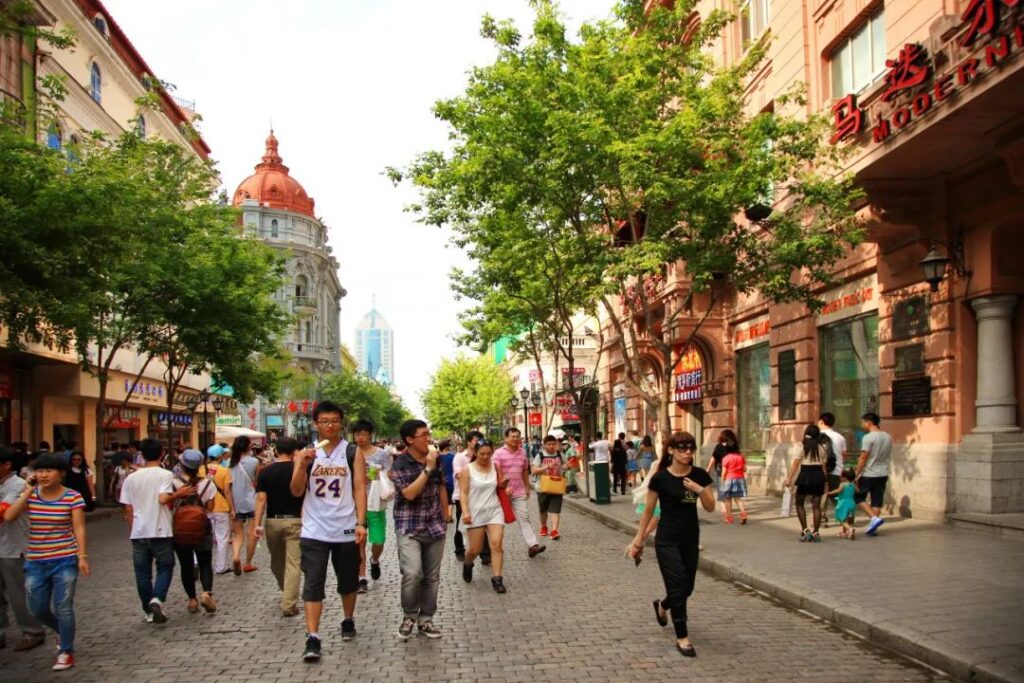
Today, the people of Harbin are proud to have the warm, beautiful, and brilliant Central Street. Every day, even if they don’t buy anything, Harbin residents still throng to this warm street to experience romance, joy, and ease. Harbin is glorious because of Central Street, and Central Street shines brightly because of Harbin.

